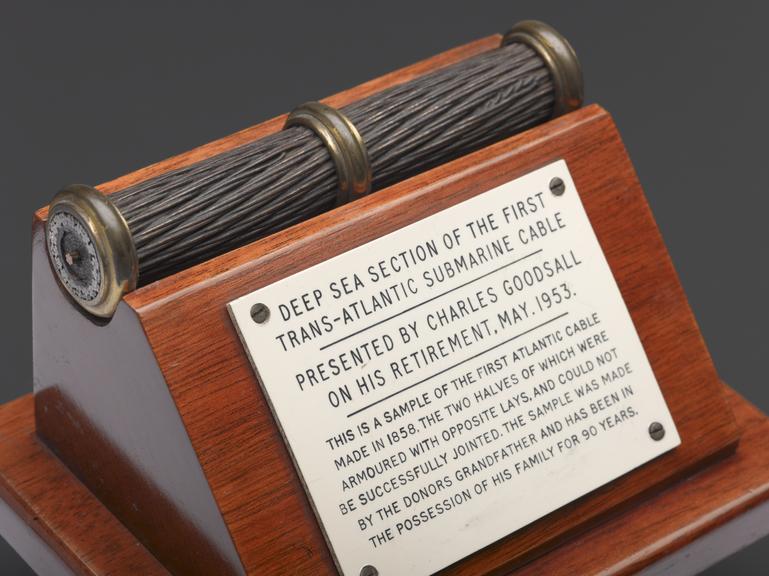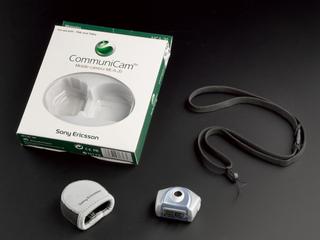




Sample of deep-sea section of first transatlantic cable mounted on wooden presentation block, made by Glass, Elliot and Company, Greenwich, London, England, 1857-1858.
Between 1857 and 1858, several attempts were made to lay a submarine telegraph cable across the Atlantic. The whole cable was made by the Gutta-Percha Company of London in lengths of two miles which were then spliced together to give two equal parts. The reason for this was that no ship then existed which could carry the entire length required to traverse the Atlantic. The cable was to be carried by two ships which would sail together to the middle of the Atlantic, splice the cables there and sail away, one ship to each shore. The cable was protected with an outer sheathing of iron wires laid spirally. The work of adding this was given to two companies, R S Newall & Co of Birkenhead and Glass, Elliot & Co of Greenwich. Newall’s adopted the more ordinary right-hand lay which was usual in rope-making and had been used on telegraph cables up to that time. Glass and Elliot, however, realised that fresh turns would be put into a cable with right-hand lay if coiled into the vessel right-handedly, as was the normal way. To counteract this they decided to apply the wires the opposite way, so that, in coiling down, the turns set up in manufacture would be taken out again. Unfortunately Glass, Elliot & Co did not inform either Newall’s or the Atlantic Telegraph Company that they were doing this and the result was not discovered until after the work was complete. A special splicing frame had to be devised to join the cables together securely. On 29 July 1858 the incompatible cables were joined and the two ships sailed away from each other, ‘Niagara’ to Newfoundland and ‘Agamemnon’ to Ireland. Both ships reached their destinations on 5 August 1858 and the first transatlantic telegraph cable was complete.
Details
- Category:
- Telecommunications
- Object Number:
- 1970-54
- Materials:
- copper (alloy), wood (unidentified), gutta-percha) and felt
- Measurements:
-
overall: 133 mm x 100 mm x 77 mm, .35 kg
- type:
- cable
- credit:
- Donated by GEC-AEI Telecommunications Limited




